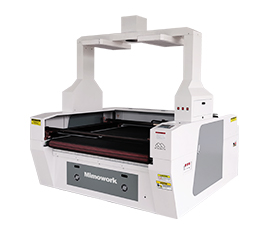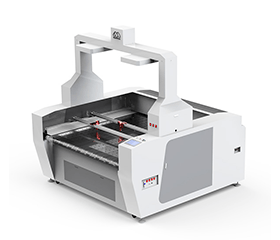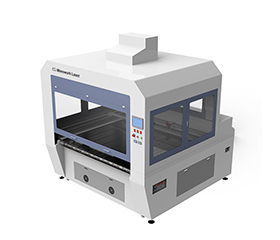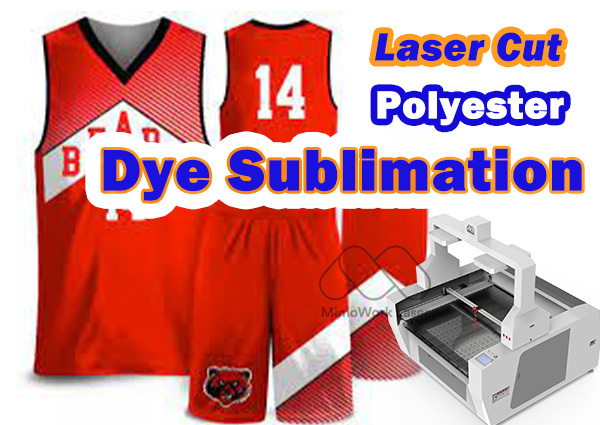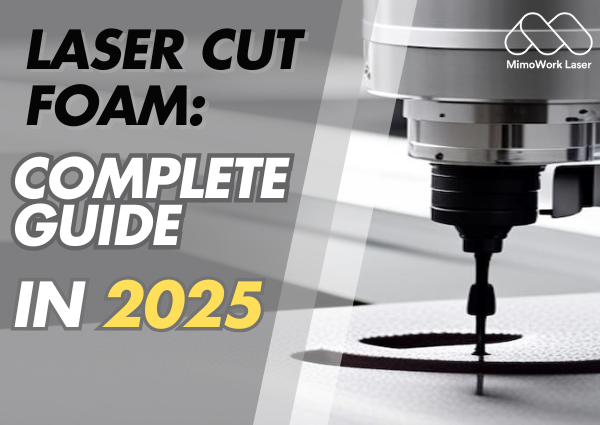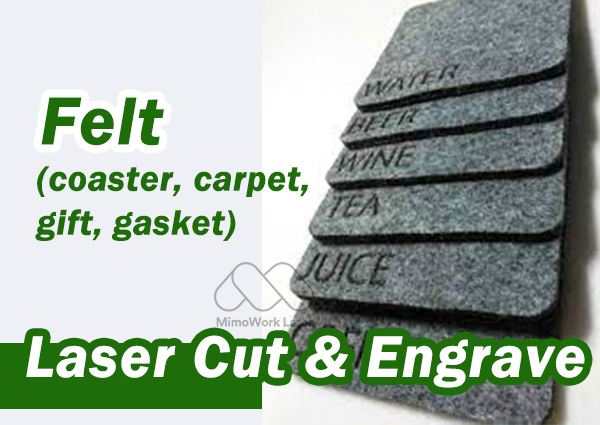How To Cut Polyester: Applications, Methods And Tips
Introduction:
Key Things to Know Before Diving In
Polyester is a widely used fabric known for its durability, versatility, and resistance to wrinkles and shrinking. However, cutting polyester requires the right techniques to achieve clean edges and prevent fraying. Whether you are working on industrial applications, sewing projects, or custom designs, selecting the best cutting method is essential for precision and efficiency.
In this guide, we will explore various cutting techniques, including manual, CNC knife, and laser cutting, along with practical tips to ensure smooth and professional results. By understanding the advantages and limitations of each method, you can choose the most suitable approach for your specific needs.
Various Uses Of Polyester
▶ Used In The Production Of Clothing
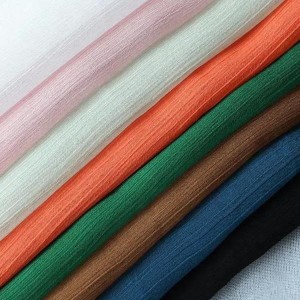
The most common application of polyester is in fabrics. Polyester fabric has properties that make it ideal for use as clothing due to its durability, low cost, and resistance to staining. Even though polyester is not inherently breathable, modern advancements in fabric engineering, such as moisture-wicking technologies and specialized weaving methods, have made it a popular choice for breathable thermal and athletic clothing. Moreover, polyester is typically blended with other natural fabrics to increase comfort and reduce the amount of creasing that is common with polyester. Polyester fabric is one of the most widely used textiles on the planet.
▶ Applications Of Polyester In Industry
Polyester is widely used in industrial applications due to its high tensile strength, durability, and resistance to stretching. In conveyor belts, polyester reinforcement enhances strength, rigidity, and splice retention while reducing friction. In safety belts, densely woven polyester ensures durability and reliability, providing critical protection in automotive safety systems. These properties make polyester an essential material in industries requiring strong and long-lasting textile reinforcements.
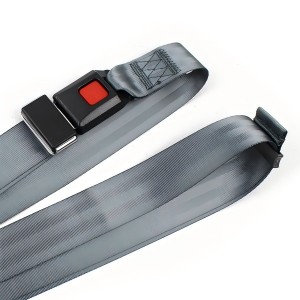
Comparison of Polyester Cutting Methods
Manual Cutting Polyester
Advantages:
✅ Low initial investment – No need for expensive equipment, making it accessible to small businesses.
✅ Highly flexible for custom designs – Suitable for unique or small-batch production.
CNC Knife Cutting Polyester
Advantages:
✅ High efficiency – Several times faster than manual cutting, improving production speed.
✅ Good material utilization – Reduces waste, optimizing fabric use.
Laser Cutting Polyester
Advantages:
✅ Unmatched precision – Laser technology ensures high accuracy and clean edges, minimizing errors.
✅ High-speed production – Significantly faster than manual and CNC knife cutting, making it ideal for large-scale manufacturing.
Disadvantages:
❌ Low efficiency – Cutting speed depends on workers, making it difficult to meet high production demands.
❌ Inconsistent precision – Human error can lead to uneven edges and shape deviations, affecting product quality.
❌ Material waste – Inefficient use of fabric increases production costs.
Disadvantages:
❌ Initial investment required – Machines can be costly for small businesses.
❌ Limited design complexity – Struggles with intricate details and extremely fine cuts compared to laser cutting.
❌ Requires software expertise – Operators must be trained in digital pattern-making and machine handling.
Disadvantages:
❌ Potential fabric damage – Polyester and other synthetic fabrics may experience burning or slight melting at the edges. However, this can be minimized by optimizing laser settings.
❌ Ventilation is Must - When it comes to laser cutting, things can get a little smoky! That’s why having a solid ventilation system in place is super important.
● Best Suited For:
Small-scale, custom, or artisanal production.
Businesses with low investment.
● Best Suited For:
Mass production of fabric-based products with moderate design complexity.
Industries looking for alternative to manual cutting.
● Best Suited For:
Large-scale textile manufacturing.
Industries requiring high-precision, intricate designs
Here is a chart which provides a comprehensive overview of the most suitable cutting methods for different types of polyester fabric. It compares manual cutting, CNC vibrating knife cutting, and laser cutting, helping you choose the best technique based on the specific polyester material you're working with. Whether you are cutting heavy-duty, delicate, or high-detail polyester, this chart ensures that you select the most efficient and precise cutting method for the best results.
Matching Polyester Types With The Right Cutting Method
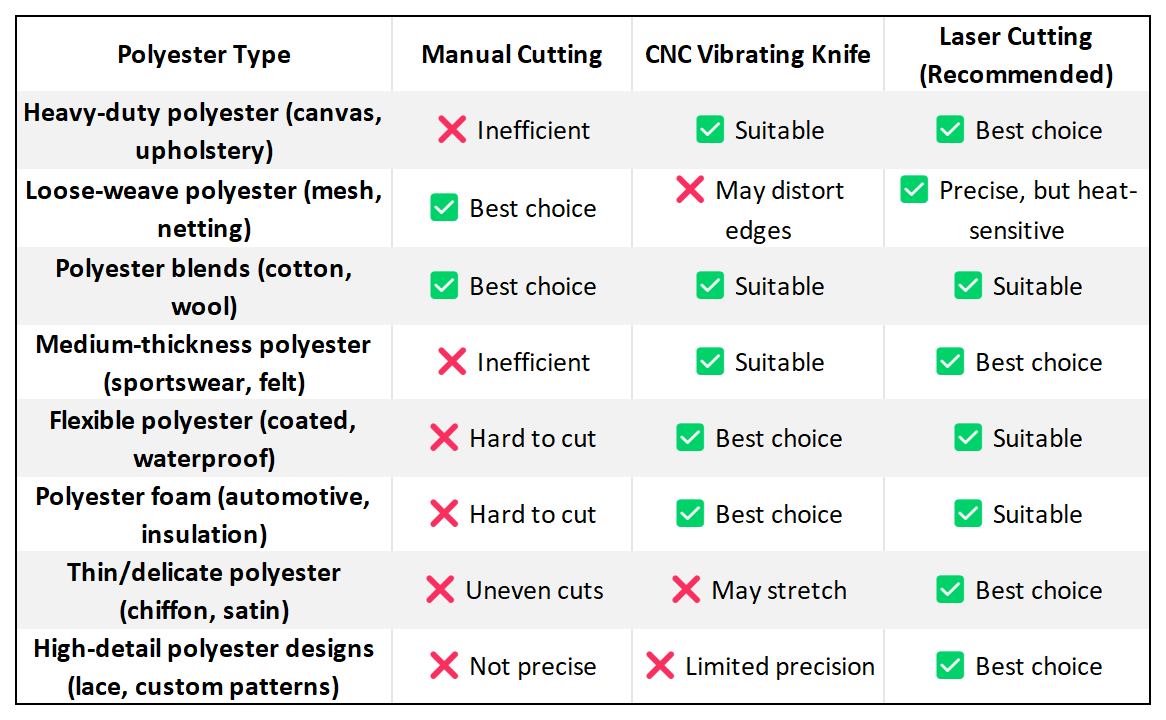
Any Ideas about Laser Cutting Filter Cloth, Welcome to Discuss with Us!
How to Cut Polyester Fabric ?
Polyester is a popular fabric choice due to its durability and versatility, but cutting it can be tricky. One common issue is fraying, where the fabric’s edges unravel and create a messy finish. Whether you’re a DIY enthusiast or a professional seamstress, achieving clean, fray-free cuts is essential for a polished look.
▶ Why Does Polyester Fabric Fray?
Cutting Method
The way polyester fabric is cut plays a crucial role in its tendency to fray. If dull scissors or a blunt rotary cutter are used, they can create uneven, jagged edges that unravel more easily. To achieve clean edges with minimal fraying, sharp and precise cutting tools are essential.
Handling and Using
Regular handling and frequent use of polyester fabric can gradually lead to fraying at the edges. The friction and pressure exerted on fabric edges, especially in areas subject to constant wear, can cause fibers to loosen and unravel over time. This issue is commonly observed in clothing and other frequently used textile items.
Washing and Drying
Incorrect washing and drying methods can contribute to polyester fabric fraying. Excessive agitation during washing, particularly in machines with agitators, can roughen fabric edges and lead to fraying. Additionally, exposure to high heat during drying can weaken the fibers, making them more prone to unraveling.
Edge Finish
The way the fabric’s edges are finished greatly influences its likelihood of fraying. Raw edges without any finishing treatment are far more susceptible to unraveling than those that have been properly sealed. Techniques such as serging, overlocking, or hemming effectively secure fabric edges, preventing fraying and ensuring long-term durability.
▶ How To Cut Polyester Fabric Without Fraying?
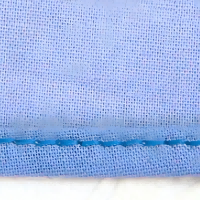
1. Finish the Raw Edges
A reliable way to prevent fraying is by finishing the raw edges of the fabric. This can be done by sewing a narrow hem along the edges, either with a sewing machine or by hand, to enclose the raw fabric and create a neat, polished look. Alternatively, an overlock stitch or a serger can be used to reinforce the edges, offering a professional finish while effectively preventing fraying.
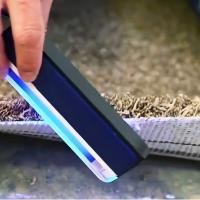
2. Use Heat to Seal the Edges
Applying heat is another effective method for sealing polyester edges and preventing fraying. A hot knife or soldering iron can be used to carefully melt the fabric edges, creating a sealed finish. However, since polyester is a synthetic material, excessive heat can cause it to melt unevenly or even burn, so caution is necessary when using this technique.
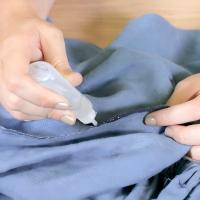
3. Use Fray Check on the Cut Edges
Fray Check is a liquid sealant designed to prevent fabric edges from unraveling. When applied to the cut edges of polyester fabric, it dries into a flexible, clear barrier that holds fibers in place. Simply apply a small amount to the edges and let it dry completely. Fray Check is widely available in fabric stores and is a useful addition to any sewing kit.
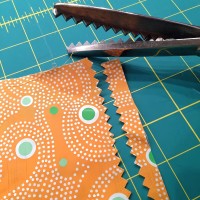
4. Use Pinking Shears when Cutting
Pinking shears are specialized scissors with serrated blades that cut fabric in a zigzag pattern. This pattern helps reduce fraying by limiting the unraveling of fibers and providing a more secure edge. Pinking shears are especially beneficial when working with lightweight polyester fabrics, offering an easy and effective way to improve fabric durability.
▶ How To Laser Cut Polyester? | Video Display
Matching Polyester Types With The Right Cutting Method
Unlocking the secrets to fast and automatic sublimation sportswear cutting, the MimoWork vision laser cutter emerges as the ultimate game-changer for sublimated clothing, including sportswear, leggings, swimwear, and more. This cutting-edge machine introduces a new era in the world of apparel production, thanks to its accurate pattern recognition and precise cutting capabilities.
Dive into the realm of high-quality printed sportswear, where intricate designs come to life with unparalleled precision. But that's not all – the MimoWork vision laser cutter goes above and beyond with its auto-feeding, conveying, and cutting features.
Camera Laser Cutter for Sportswear & Clothing
We're diving into the realms of advanced and automatic methods, exploring the wonders of laser cutting printed fabrics and activewear. Equipped with a cutting-edge camera and scanner, our laser cutting machine takes efficiency and yields to unprecedented heights. In our captivating video, witness the magic of a fully automatic vision laser cutter designed for the world of apparel.
The dual Y-axis laser heads deliver incomparable efficiency, making this camera laser-cutting machine a standout performer in laser cutting sublimation fabrics, including the intricate world of jersey materials. Get ready to revolutionize your approach to laser cutting with efficiency and style!
FAQs For Polyester Cutting
▶ What Is The Best Method For Cutting Polyester Fabric?
Laser cutting is the most versatile, precise, and efficient method for polyester fabric processing. It ensures clean edges, minimizes material waste, and allows for intricate designs. While CNC vibrating knife cutting is a good alternative for certain industrial applications, laser cutting remains the best choice for most polyester types, especially in fashion, automotive, and technical textile industries.
▶ Is It Safe To Laser Cut Polyester?
Yes, laser cutting polyester is generally safe when proper safety precautions are taken. Polyester is a common material for laser cutting because it can produce precise and clean cuts. Usually, we need to equip a well-performed ventilation device, and set proper laser speed & power based on material thickness and gram weight. For detailed laser setting advice, we suggest you consult our laser experts who are experienced.
▶ Can CNC Knife Cutting Replace Laser Cutting?
CNC knife cutting works well for thicker or more flexible polyester materials by minimizing heat damage, but it lacks the ultra-high precision and self-sealing edges that laser cutting provides. While CNC is cost-effective and efficient for many industrial applications, laser cutting remains superior when intricate details, extremely clean cuts, and prevention of fraying are required, making it the preferred choice for delicate and high-precision polyester products.
▶ How To Prevent Polyester Edge From Fraying ?
To prevent polyester edges from fraying, the best approach is to use a cutting method that seals the edges, such as laser cutting, which melts and fuses the fibers as it cuts. If using other methods like CNC vibrating knife or manual cutting, additional finishing techniques—such as heat sealing, overlocking, or applying adhesive edge sealants—can be employed to secure the fibers and maintain a clean, durable edge.
▶ Can You Laser Cut Polyester?
Yes. The characteristics of polyester can be greatly improved by laser processing. As is the case for other thermoplastics, this synthetic fabric undergoes well both laser cuts and perforations. Polyester, just like other synthetic plastics, absorbs the radiation of the laser beam very well. Out of all the thermoplastics, it’s the one that gives best results for both processing and lack of waste.
Recommended Machine For Laser Cut Polyester
To achieve the best results when cutting polyester, choosing the right polyester laser cutting machine is crucial. MimoWork Laser offers a range of machines that are ideal for laser cutting polyester, including:
• Working Area (W *L): 1600mm*1200mm
• Laser Power: 100W/130W/150W
• Working Area (W *L): 1800mm*1300mm
• Laser Power: 100W/130W/300W
• Working Area (W *L): 1800mm*1300mm
• Laser Power: 100W/130W/150W/300W
Any Questions About Laser Cutting Machine For Polyester?
Post time: Feb-07-2025


